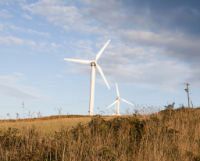

The UK installed a record-breaking amount of new offshore wind capacity during 2018, with growth in the sector set to attract billions in investment and create thousands of jobs.
The findings from RenewableUK shows that more than 2,121 megawatts (MW) of offshore wind capacity went operational over last year, nearly double the previous record of 1,154 MW installed in 2012.
This would generate enough energy to power 2.3 million homes annually, with eight offshore wind farms officially opened in UK waters, including the worlds largest and first ever floating wind farm.
RenewableUK said that offshore wind could generate more than a third of the UK's energy needs by 2030, with approximately 20 gigawatts (GW) up and running, which could attract as much as £48 billion in investment and create around 27,000 jobs.
The association is hoping offshore wind will be able to offer the UK even more in the Offshore Wind Sector Deal.
The near-doubling of new capacity installed in the UK this year was achieved with just 18% more turbines than were installed in 2012, which RenewableUK said underlines the "impressive growth" in turbine power.
Since 2012, the average capacity of an offshore turbine has grown over 50% from 3.7 MW to 5.8 MW last year.
This comes after GE Renewable Energy unveiled plans to develop the world's largest and most powerful offshore wind turbine, generating enough power for up to 16,000 European households every year.
The Haliade-X will produce 45% more energy than any other offshore turbine available, and feature a 220-meter rotor with blades longer than the size of a professional football field.
It will be 260 metres above the sea and include a 12 MW direct drive generator producing 67 GWh annually.
CEO of GE Renewable Energy, Jérôme Pécresse said "it took more than 20 years to install the first 17 GW of offshore wind. Today, the renewables industry forecasts it will install more than 90 GW over the next 12 years".
"The Haliade-X shows GE's commitment to the offshore wind segment and will set a new benchmark for cost of electricity, thus driving more offshore growth".